Only this morning did it occur to me that the experience has all the hallmarks of an alien abduction.
You’re minding your own business when suddenly you’re trapped, encased in a weird prism of green light.
The next thing you know, you’re hovering through the air, floating in space.
You’re powerless to control what’s happening, having no idea where you’re being taken.
Then, just as quickly as you were taken, you’re released into completely foreign territory.
They may not have any Survivor Support groups for the experience, but if they did, that’s what I imagine the mice I release from our humane traps would report.
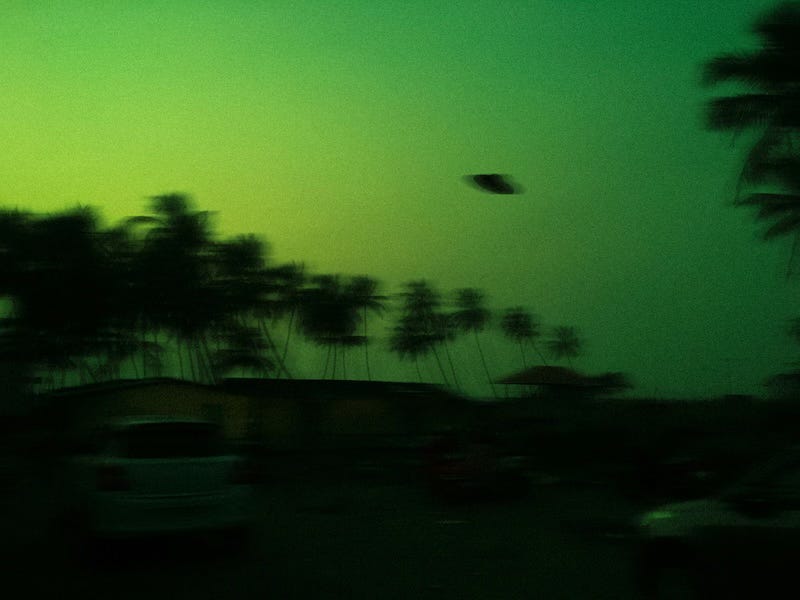
Earlier I wrote about how surprised I was by how often I had to jostle the mice toward freedom.
(Note: we’re now down to about one mouse a week—a credit to both the traps and the warm weather.)
I have, in any case, as you’ll see from the video below, perfected my technique.
Please note the footage starts with the cage completely open.
My mouse friend simply lingers there, long enough in fact for me to film his PDTS Abduction Paralysis.
What I can’t stop thinking about, however, is what it takes to get him moving again: just a simple nudge.
The tiniest push in the right direction sets him free… and how much I can relate.
It’s not just because we’re exploring Resistance as a theme this month—Guided Meditation HERE—or that in the Transformation Book Club, we’re reading Steven Pressfield’s The War of Art, that this behavior strikes a chord.
It resonates because it’s what I experience not only with coaching clients but also—more strikingly—within myself, often on a daily basis.
I’m definitely not alone in this for, as Pressfield writes:
“Everyone who has a body experiences Resistance.”
What’s potentially most daunting, though, is that not only does Resistance never sleep—it’s something you never truly outgrow.
For example, Henry Fonda made his Broadway debut at 24.
Apparently, even when he was in his 70s, he was still so anxious that before most performances he would vomit.
As Pressfield writes, Resistance never goes away.
“The warrior and the artist
live by the same code of necessity,
which dictates that the battle
must be fought anew each day.”
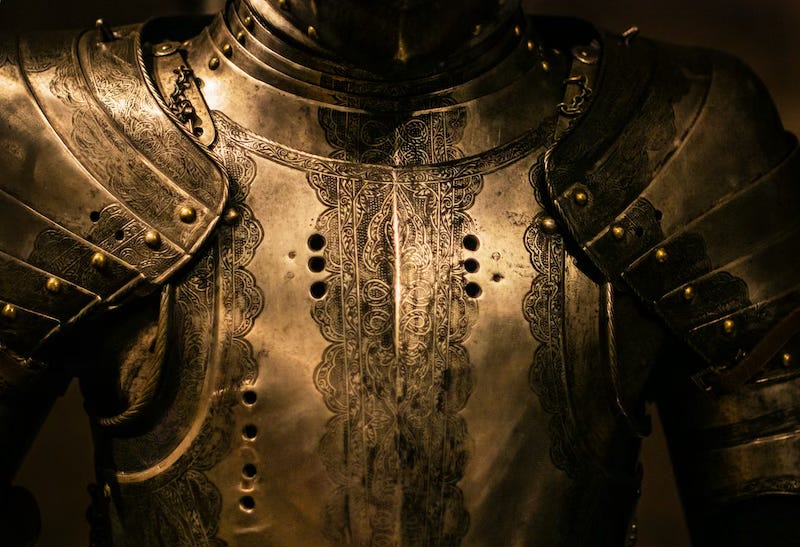
The power of a nudge is shown in this story about one of my absolute favorite artists, the pianist Vladimir Horowitz.
In May 1965, after a 12-year self-imposed exile from performing in public, he announced he would return to the concert stage.
It was a rockstar level event, with fans camping out overnight outside Carnegie Hall just to get tickets when the box office opened.
His wife Wanda Horowitz—daughter of the legendary conductor Arturo Toscanini—personally brought coffee to those waiting that cold April morning.
When the day of the performance arrived, however, just before he was about to step onstage, Horowitz froze.
Despite the full concert hall, he was prepared to turn and walk away.
Thankfully, Wanda was backstage.
She gently but firmly—quite literally—pushed him into the spotlight.
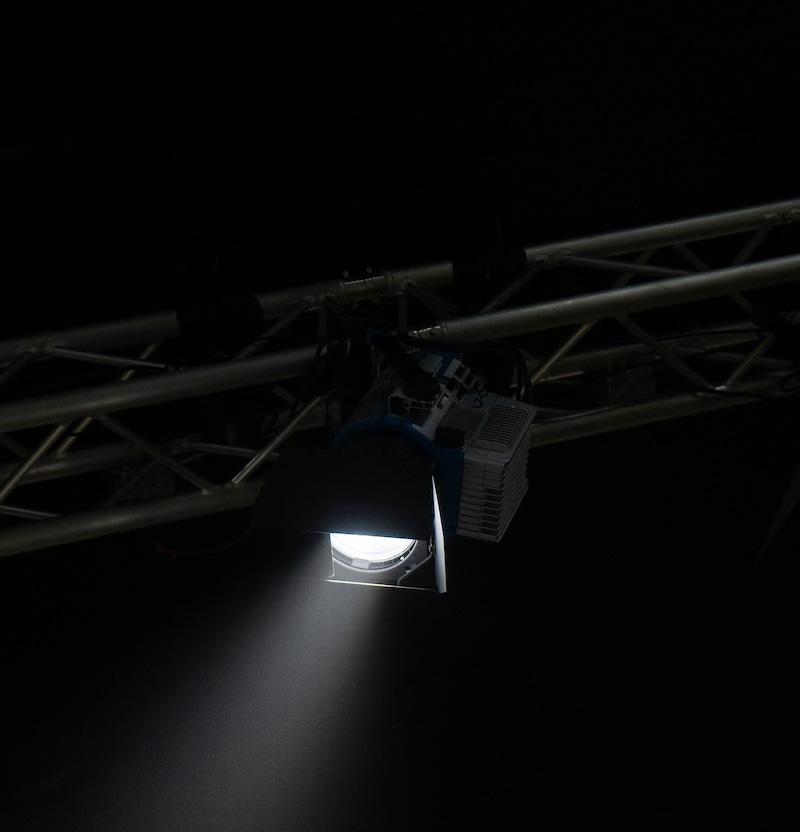
Critics describe that concert as one of the most electric, emotionally charged moments in live music history.
Before he played a single note, the audience rose to a standing ovation that lasted at least four minutes.
As one critic wrote, it was “as if 12 years of silence were being broken with applause alone.”
Horowitz simply stood motionless, soaking it all in, before sitting down to play.
The first few chords are shaky, but then he rises to the challenge in magnificent—perhaps even superhuman—ways.
It all culminates in a spectacular performance of the Chopin G-Minor Ballade HERE.
The concert ends with a 20-minute—some say 30—standing ovation and multiple encores.
Critic Harold C. Schonberg of The New York Times wrote:
“It was as if a dam had broken… an eruption of love, admiration, and pent-up joy.”
Horowitz went on to concertize for another 24 years.
How remarkable to think he might have turned away in that moment, perhaps never to play publicly again, if not for that all-important nudge back into the light.

Despite its persistence, there’s no need to despair over the battle with Resistance.
Pressfield tells us that the part we create from is “far deeper and stronger.”
“The part we create from …
is unsullied, uncorrupted;
soundproof, waterproof, and bulletproof.”
Perhaps no one has expressed this better than Maya Angelou.
STILL I RISE
You may write me down in history
With your bitter, twisted lies,
You may trod me in the very dirt
But still, like dust, I’ll rise.Does my sassiness upset you?
Why are you beset with gloom?
’Cause I walk like I’ve got oil wells
Pumping in my living room.Just like moons and like suns,
With the certainty of tides,
Just like hopes springing high,
Still I’ll rise.Did you want to see me broken?
Bowed head and lowered eyes?
Shoulders falling down like teardrops,
Weakened by my soulful cries?Does my haughtiness offend you?
Don’t you take it awful hard
’Cause I laugh like I’ve got gold mines
Diggin’ in my own backyard.You may shoot me with your words,
You may cut me with your eyes,
You may kill me with your hatefulness,
But still, like air, I’ll rise.Does my sexiness upset you?
Does it come as a surprise
That I dance like I’ve got diamonds
At the meeting of my thighs?
Out of the huts of history’s shame
I rise
Up from a past that’s rooted in pain
I rise
I’m a black ocean, leaping and wide,
Welling and swelling I bear in the tide.
Leaving behind nights of terror and fear
I rise
Into a daybreak that’s wondrously clear
I rise
Bringing the gifts that my ancestors gave,
I am the dream and the hope of the slave.
I rise
I rise
I rise.
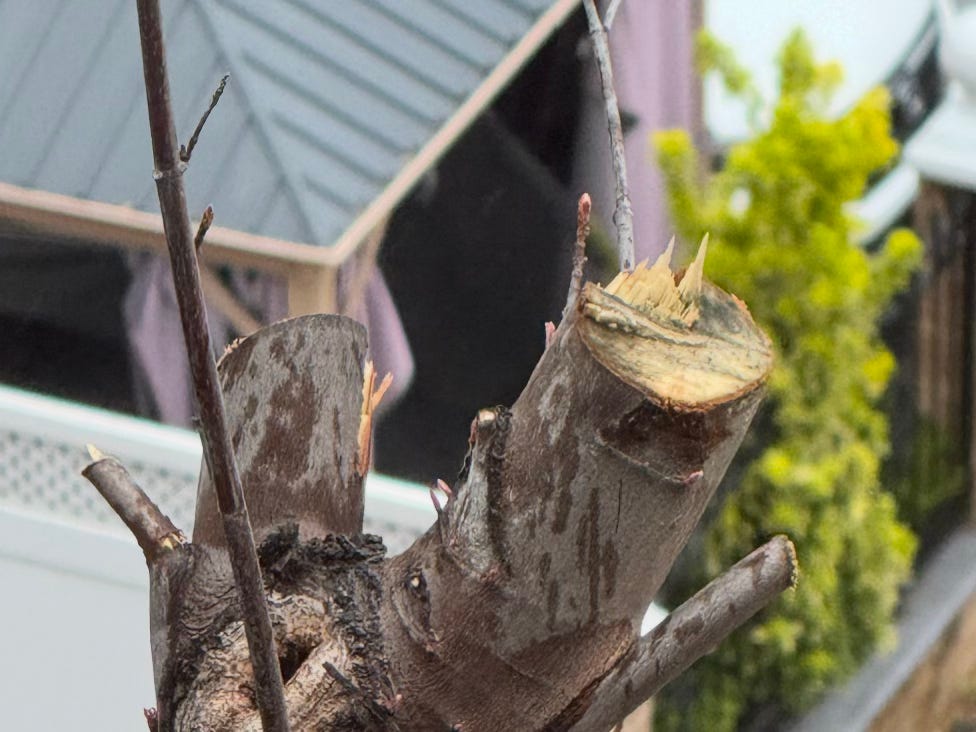
In that same light…
As I wrote HERE, the only casualty of my recent move was my beloved two-story-tall tree I couldn’t take with me.
I’m delighted to report—and very fittingly on Easter Sunday—that despite taking a chainsaw to it, my landlord did not succeed in killing it.
My upstairs neighbor texted to say he fully expects the tree to come back to life, and sent the snapshot above to share the evidence of new growth.
It’s often quoted as a Mexican proverb since it was adopted by political movements, but the lines that come to mind are actually from the Greek poet Dinos Christianopoulos.
“What didn’t you do to bury me—
but you forgot that I was a seed”
That’s an easy thing to forget, especially about ourselves.
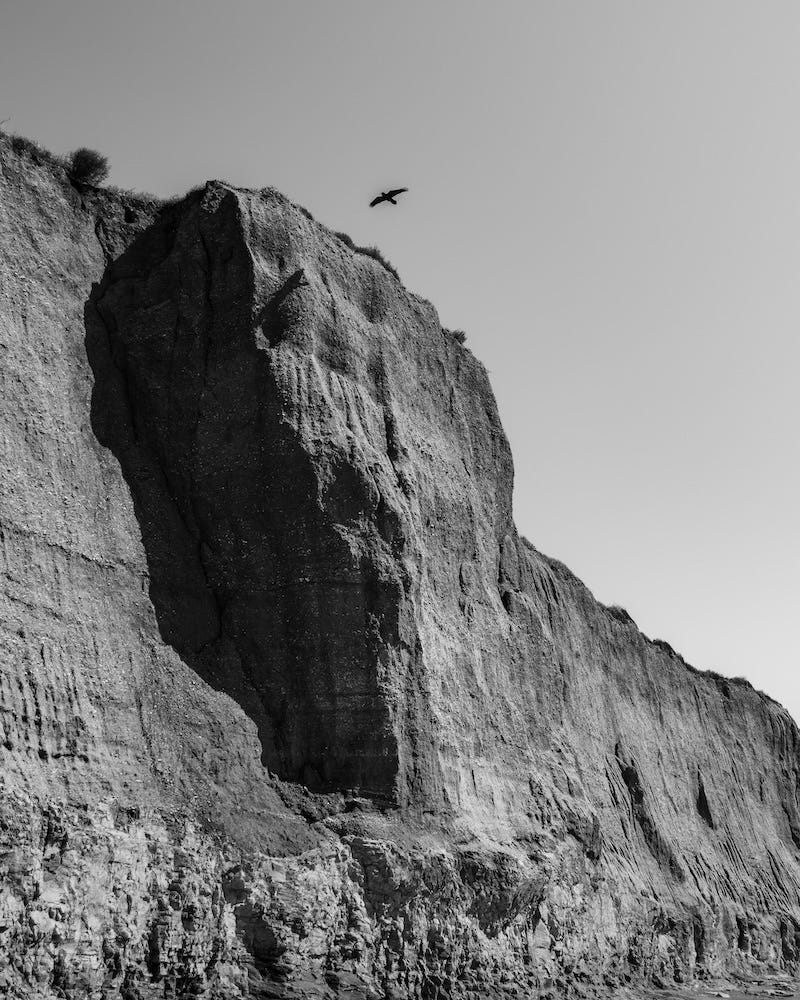
Finally, the other lines that resonate here are those usually attributed to Guillaume Apollinaire.
“Come to the edge,” he said.
“We can’t, we’re afraid!” they responded.
“Come to the edge,” he said.
“We can’t, we will fall!” they responded.
“Come to the edge,” he said.
And so they came.
And he pushed them.
And they flew.
Resistance may be universal and eternal, but whether it’s Vladimir and Wanda Horowitz—or me and my mouse—sometimes overcoming it only takes a little nudge.
(If you watch the video, it’s astonishing how fast the little guy gets moving once he decides to break free.)
As we move through resistance within ourselves, let that be a reminder of what’s always possible—no matter how long we’ve delayed or how many chainsaws have been taken to us.
Resistance is omnipresent, but there’s always the chance to rise.
Tell A New Story | Transform Your Life

